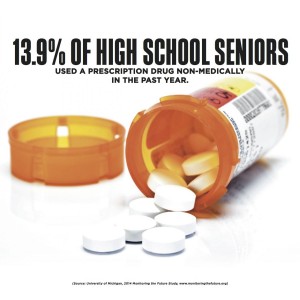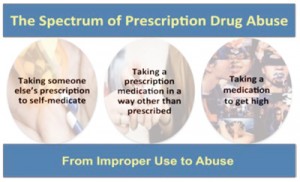BRIEF SUMMARY: Tramadol is used as a painkiller medication. It belongs in a class of medications called opiate (narcotic) analgesics. It works by changing the way your brain and nervous system respond to pain. However, tramadol also carries an addiction potential and risk for abuse.
TABLE OF CONTENTS
- Ingredients
- Medical Use
- Safety
- Effectiveness
- Non Medical Uses
- Additive Potential
- Safe Use
- Signs of a Problem
Ingredients
Tramadol (known by brand names Ultram or Ultracet) is a type of medication called an “opiate agonist”, which works by changing the way the body senses pain in the central nervous system. It is classified as a central nervous system depressant and an analgesic.
The active chemical in the drug is tramadol hydrochloride, which can sometimes be combined with acetaminophen and is generally administered in tablet form. When prescribed by doctors in the U.S. for medical reasons, tramadol tablets can be taken in 37.5, 50, 70 and 100 mg doses and is legal. Giving tramadol to someone without a prescription is illegal in the U.S.

Medical Use
Tramadol is a synthetic (man-made) opioid, which is used principally to treat moderate to moderately severe pain. Tramadol can be prescribed for a number of painful conditions, including:
- Acid reflux
- Back pain
- Fibromyalgia
- Headaches
- Nerve disorders
- Osteoarthritis
- Restless leg syndrome
- Spinal stenosis
Tramadol is also currently being tested for use in personality disorders such as OCD (obssessive-compulsive disorder) and even premature ejaculation.
Safety
The best and the safest way to use tramadol is to take it exactly as directed by your doctor. The usual procedure includes taking the medication once every 4-6 hours to release the pain. Tramadol can be taken in combination with food or on its own. If you notice cramping or discomfort too strong for your stomach, you can may prefer to take tramadol with food.
Tramadol is available in multiple doses and strengths depending on your medical condition and response to treatment. To reduce the risk of side effects, your doctor may prescribe a low dose at first, and then gradually increase your doses over some period of time. The maximum recommended dose of tramadol is 400 milligrams per day. For those older than 75 years, the maximum recommended dose is 300 milligrams per day.
NEVER increase or decrease your tramadol doses without a prior medical consultation. Pain relievers work best if they are used as the first signs of pain occur. If you wait until the pain has worsened, the medication may not work as well.
For long term pain, doctors usually prescribe a long-acting opioid medication like hydrocodone or oxycodone…or an extended release version of tramadol. These medications can be also used for sudden (breakthrough) pain only as needed. Other pain relievers such as acetaminophen, ibuprofen may also be prescribed for pain moderation. Ask your doctor or pharmacist how to use tramadol safely with other drugs.
Effectiveness
Tramadol has been proen effective in the treatment of pain, even for chronic, long-term pain. According to the results of a study titled, “Tramadol extended-release in the management of chronic pain” in the medical journal, Therapeutics and Clinical Risk Management, tramadol has been widely prescribed for the treatment of chronic pain for more than a decade and has demonstrated efficacy and safety in the treatment of moderate to moderately severe pain. The Journal of Clinical Rheumatology confirms the efficacy of tramadol in the treatment of fibromyalgia pain in a study published on October 6th, 2000.
Non Medical Uses
Tramadol hydrochloride is attractive to drug abusers and people with addiction disorders for its pain relieving and mood altering effects. People abuse tramadol and use the drug non-medically to produce:
- Altered emotional state
- Feelings of euphoria
- Physical sedation

Still, tramadol can case unwanted side effects, include overdose and death. If you’re taking tramadol to get high, beware of symptoms of overdose, including:
- Blurred vision
- Impaired mental functioning
- Nausea
- Severe respiratory depression
- Sleepiness
Remember these “Get Smart” tips about prescription drug abuse: Many people who misuse prescription drugs get them free from a relative, friend, or the family medicine cabinet. So, discard safely old and unused prescription drugs or store medications in a locked cabinet.
Additive Potential
Yes, you can become addicted to tramadol. Addiction to tramadol occurs when you:
- Begin to crave the drug
- Cannot stop taking it
- Take it for non-medical purposes
…and/or continue to take tramadol despite negative consequences.
If you use tramadol to change the way you feel, you’re going down a path towards addiction.
Tramadol addiction is separate and distinct from physical dependence or tolerance to the drug. The drug necessarily creates physical dependence, but not addiction. In fact, dependence on tramadol can occur after just three months of use at 400 mg per day. But if you’re dependent , it doesn’t mean you’re addicted. Addiction is about intention of use.
Are you scared that you might be addicted to tramadol? Click here to take a self-survey for prescription drug addiction. Then, present the results to your family doctor and/or seek help from an addiction treatment center or counselor.
NOTE: The FDA warns users who are prone to addiction and those with struggle with suicidal thoughts to be very cautious when taking tramadol.
Safe Use
In order to get the best results from tramadol, you need to take it as prescribed by your doctor and carefully follow the instructions listed in the medication guide. The guide is a paper handout that is usually placed inside your tablet packet. The guide contains all the specific information you need to know about the safety use, storage and disposal of your medication. You can rely on the information and the rules of use in the guide since all of them are FDA-approved information that can users avoid serious adverse events.
Using tramadol according to the medication guide and your doctor’s consultation provides the following benefits:
- Prevents overdose.
- Prevents serious adverse effects.
- Provides clear directions for use.
Do I Have a Problem?

The main signs of a drug problem as outlined by NIDA for teens include:
1. Cravings: Intense desire to take tramadol, especially to avoid feelings.
2. Inability to control use: Taking more tramadol more often than planned.
3. Recreational use: Taking tramadol to get high is a sign of a problem.
4. Tolerance: Needing more drug more often for initial therapeutic effect.
If you have a problem, you are not alone. The Surgeon General’s Report on Addiction estimates that 22.5 million people in the U.S. need help for drug problems.
Please reach out for help.
You can call us in the phone number listed on this page. Or, you can leave a comment. Speak with your doctor. Talk with a trusted friend. Whatever you do…do something! Addiction is a medical condition that responds successfully to medical treatment.
Why suffer alone? You can live the drug-free life that you deserve!
Got a Question?
Still have questions about tramadol? Maybe you have an experience to share? If so please share your questions and experiences regarding the use and effects of this mild painkiller in the section below. We try to respond personally and promptly to all legitimate inquiries.










Related Posts